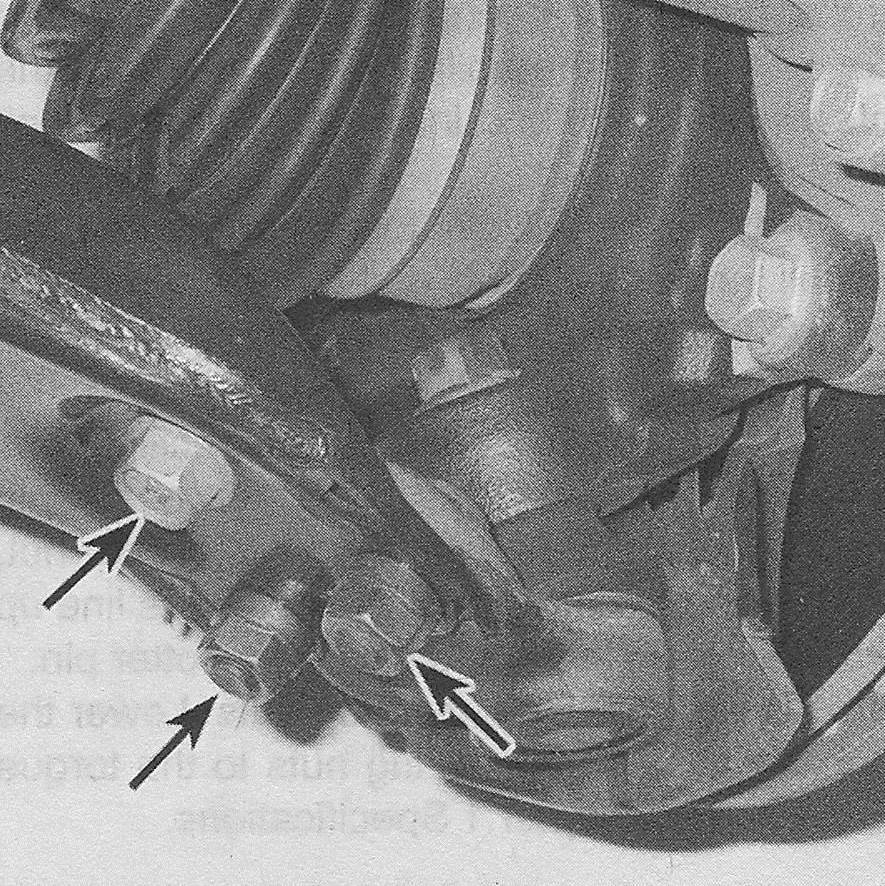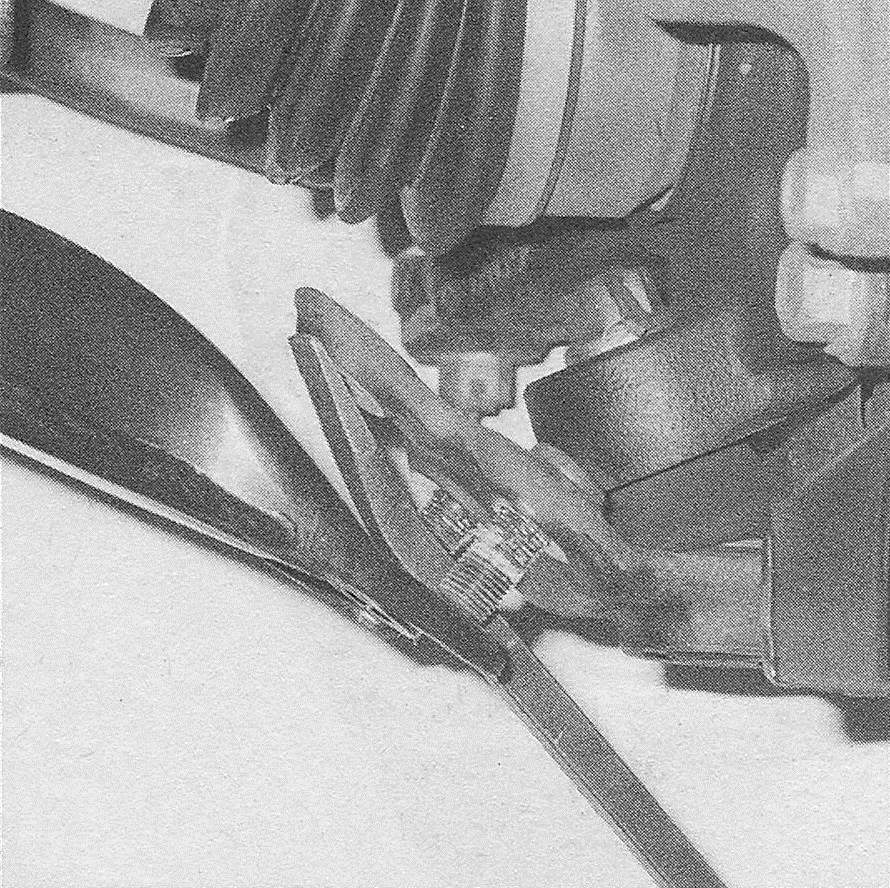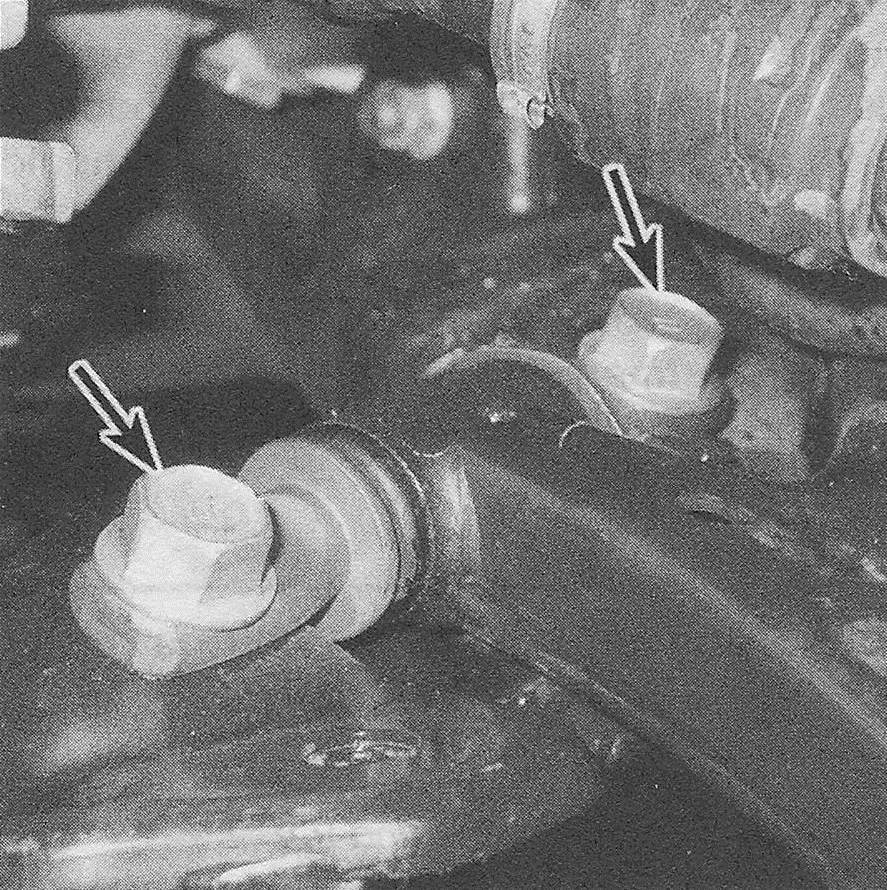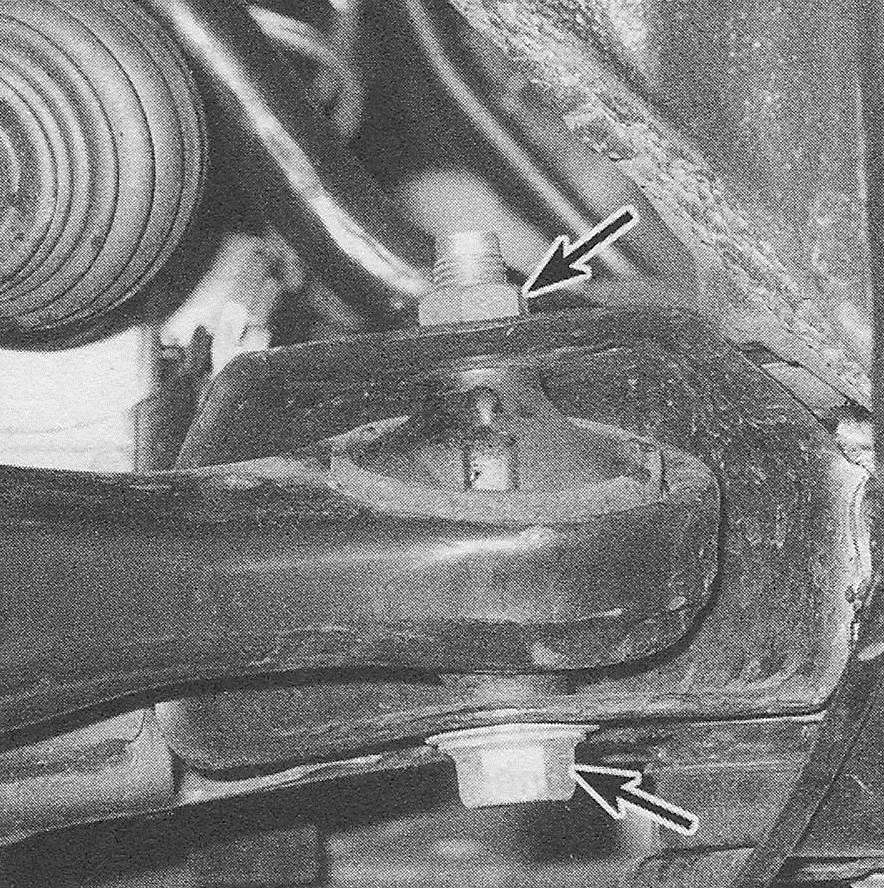Control arm — removal, inspection and installation
Removal
1. Loosen the wheel lug nuts on the side to be dismantled, raise the front of the vehicle, support it securely on jack stands and remove the wheel.
2. The transverse engine mount at the subframe interferes with removal of the rear bolts of the control arms. The procedure is difficult and requires the use of an engine lifting hoist or support fixture (refer to Four-cylinder engines V6 engine for engine mount removal/installation).
3. Remove the ballpoint retaining bolt and nuts (see illustration). Use a prybar to disconnect the ballpoint from the control arm (see illustration).
5.3a Remove these nuts and this bolt to disconnect the control arm from the ballpoint

5.3b Separate the control arm from the ballpoint with a prybar

4. Remove the two bolts that attach the front of the control arm to the subframe (see illustration).
5.4 To detach the front end of the control arm from the subframe, remove these two bolts

5. Remove the bolt and nut that attach the rear of the control arm to the subframe (see illustration).
5.5 To detach the rear end of the control arm from the subframe, remove this nut and bolt

6. Remove the control arm.
Inspection
7. Make sure the control arm is straight. If it’s bent, replace it. Do not attempt to straighten a bent control arm.
8. Inspect the bushings. If they’re cracked, torn or worn out, replace the control arm.
Installation
9. Installation is the reverse of removal. Be sure to tighten all fasteners to the torque listed in this Chapter’s Specifications.
10. Install the wheel and lug nuts, lower the vehicle and tighten the lug nuts to the torque listed in the Tune-up and routine maintenance Specifications.
11. It’s a good idea to have the front wheel alignment checked, and if necessary, adjusted after this job has been performed